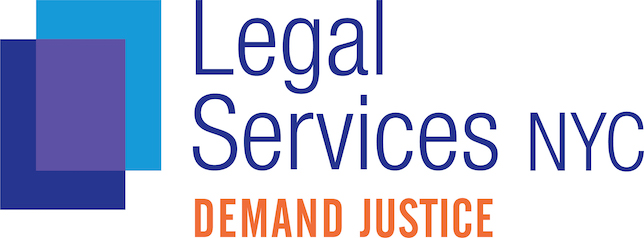Low-income people are desperate for help with federal student loans that they are unable to repay. The federal government offers a range of options for these individuals to obtain relief. Yet far too few utilize these programs, because they find them difficult to understand, and because borrowers often are left relying only on the advice of collectors. Many clients are victims of sham trade schools that promised an education or job placement, but failed to deliver anything of value.
Legal Services NYC is here to help. Call our Legal Assistance Hotline at 917-661-4500.
Access LSNYC's Student Debt Database
The Student Debt Database is designed for legal services attorneys and pro bono volunteers who are helping low-income clients to secure federal student debt relief—particularly for debt accrued to attend for-profit schools that may have acted improperly. The website serves two key functions. First, it contains a library of government materials about for-profit schools and DOE practices gathered through Freedom of Information Act (FOIA) requests, or through parallel state government disclosure laws. Second, it contains training materials for a pro bono student debt project designed to help low-income clients struggling with student debt. The website was created by Legal Services NYC and Pro Bono Net, with a grant from the Legal Services Corporation.
Student Debt: Background
Federal student debt is a looming economic crisis for the nation, ballooning to more than $1.2 trillion in 2013, according to the Consumer Financial Protection Bureau. Student Debt Swells, Federal Loans Now Top A Trillion Dollars, CFPB, July 17, 2013, available at: http://www.consumerfinance.gov/newsroom/student-debt-swells-federal-loans-now-top-a-trillion/.
This is debt that prevents Americans from pursuing careers of their choosing, from making big purchases, and from undertaking major life events like getting married and having children. The Federal Reserve Bank of New York has found, for example, that people with student debt are avoiding buying cars, and are less likely to purchase homes. Young Student Loan Borrowers Retreat from Housing and Auto Markets, Federal Reserve Bank of New York, April 17, 2013, available at: http://libertystreeteconomics.newyorkfed.org/2013/04/young-student-loan-borrowers-retreat-from-housing-and-auto-markets.html#.U5H7CnKwJq0.
Data about a single cohort illustrates the scope of the problem: according to the Department of Education, more than 600,000 federal student loan borrowers who entered repayment in 2010 defaulted on their loans by 2012. Young Student Loan Borrowers Retreat from Housing and Auto Markets, U.S. Department of Education, September 30, 2013, available at: http://www.ed.gov/news/press-releases/default-rates-continue-rise-federal-student-loans. The largest share of these students—46%—went to for-profit colleges, even though those schools enrolled only 13% of students. New Data Confirm Troubling Student Loan Default Problems, Institute for College Access & Success, September 30, 2013, available at: http://www.ticas.org/files/pub/CDR_2013_NR.pdf.
For low-income Americans, the crisis is not looming—it has already arrived. See National Consumer Law Center, The Student Loan Default Trap: Why Borrowers Default and What Can Be Done at 11 (2012) (“There is strong evidence that borrowers from low ¬income families are more likely to default”). Targeted by predatory, for-profit schools, many secure federal student loans to pay for programs that they believe will help them gain a decent education and secure a job. See id. (“A disproportionate number of low ¬income and minority students attend for¬ profit school . . .[and b]orrowing rates are also highest in the for¬ profit sector. In 2007–08, 92% of students at for-¬profit colleges borrowed student loans, compared to 27% at public colleges. . .”). Borrowers from the bottom quintile “are more likely to attend for-profit colleges (19 percent of students in poverty attend for-profit colleges while only 5 percent of those not in poverty do), which have much higher default rates than public and private nonprofit colleges.” Rapidly Rising Student Debt Harms Low-Income Students, U.S. News & World Report, January 4, 2012, available at: http://www.usnews.com/education/blogs/student-loan-ranger/2012/01/04/rapidly-rising-student-debt-harms-low-income-students. The schooling provided by these sham institutions has little lasting value, but the accrued student debt endures.
Even those who attended legitimate schools may be unable to find work, or fall on hard times and go into default. The Federal Reserve Bank of San Francisco, for example, found that low- and moderate-income households have to pay more than 70 percent of the family income to cover college costs after accounting for grant aid. See Federal Reserve Bank of San Francisco, Student Debt and Default in the 12th District at 8 (2011), available at: http://www.frbsf.org/community-development/files/student-debt-default-bay-area.pdf. Lower and moderate-income students also tend to be older, not receive parental financial support, and are more likely to have family and work obligations that make them less likely to graduate than their higher-income peers. Id. at 9. “[F]ar too many [lower and moderate income] students have taken on unmanageable student debt, with no degree to boost their future earnings.” Id.



